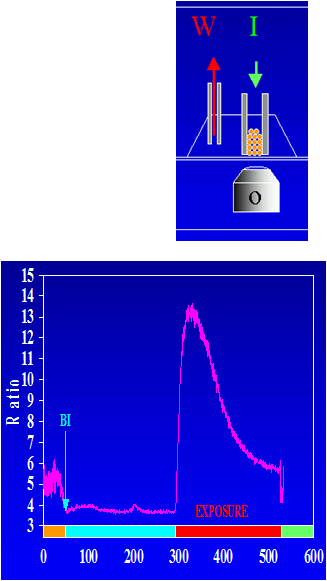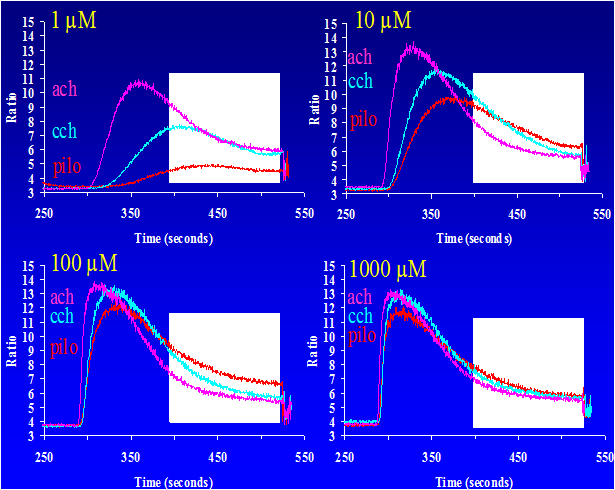Study of Pharmaceutical Antagonism
3.5.17.
Using living cells as biosensors for elucidation of receptor-ligand interactions allows probing of receptors in their native state, thus making the functional assay physiologically relevant. By measuring cellular response, such as acid or calcium release, it can be ascertained that that the receptor is not only bound but also activated. BIS techniques can be used to rank different muscarinic receptor antagonists by measuring how effectively they invoke a calcium response (Hodder 1999) but also for ranking different muscarinic receptor antagonists based upon how effectively they extinguish antagonist-induced calcium response (Hodder 2000) by using both equilibrium and kinetic measurements of functional antagonism.


Shown in these panels, Chinese hamster ovary cells transfected with type 1 muscarinic receptor and loaded with fura-2 Ca-indicator were exposed to 100 mM carbachol for 200 sec. while the calcium response was monitored by fluorescence using dual–monochromator photometry. Note that response fades during the stimulation period, as a result of cell physiology. By stimulating cells with increasing amounts of carbachol (cch), pilocarpin (pch), or acetylcholin (ach), the influence of stimulants has been ranked.
Note that it is the initial response that provides the essential information on stimulant potency. At later times (white squares) and at high concentrations, the difference between stimulants is obscured. Therefore, pipetting of stimulant onto a culture in a NUNC cell under a microscope will miss observationof initial kinetics, allowing the observation of later responses to show in a white frame.
P.S. Hodder and J. Ruzicka, Anal. Chem. 71, 1160 (1999) P.S.Hodder et al. Anal. Chem. 72,3109 (2000)









